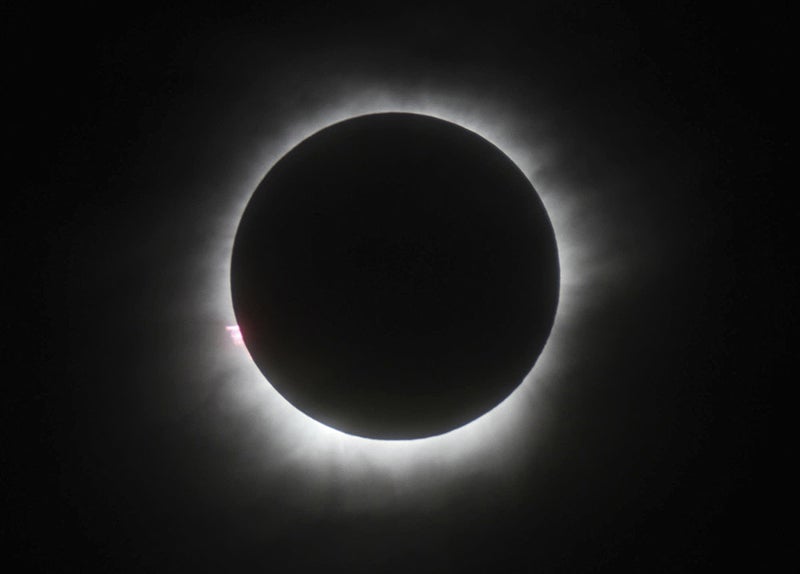How to safely watch upcoming solar eclipse without damaging your eyes
Published 3:11 pm Friday, April 5, 2024

- This March 9, 2016, photo shows a total solar eclipse in Belitung, Indonesia. - MPR News file
|
Getting your Trinity Audio player ready...
|
By Elizabeth Shockman, Minnesota Public Radio News
Minnesota isn’t in the path of totality for Monday’s solar eclipse. But the state will see about 75 percent of the sun blocked by the moon in an event lasting from 1 p.m. to 3:10 p.m.
People are preparing to watch the eclipse, but optometrists say it’s dangerous to look directly at the sun — during an eclipse or at any other time.
“It’s very tempting to look directly at it not having all of the glare, and that is exactly why it’s harmful,” said Dr. Lulwa El Zein, an assistant professor at the University of Minnesota specializing in retina health and pediatrics. “When you look directly at the solar eclipse you can actually damage your eyes.”
Even a quick glance directly at the sun can cause retina damage, including blurry vision and blind spots, according to Dr. Sandra Montezuma, at the University of Minnesota’s Medical School.
“Staring directly into the sun or watching a solar eclipse can cause eye damage known as solar retinopathy or eclipse retinopathy … the injury is similar to thermal burns caused by a laser and harms the cells in the eye that help you see,” Montezuma said. “Even a short duration of exposure — as little as a few seconds of fixation on the sun during the eclipse — can cause injury … temporary vision loss, blurred vision, distortion or permanent vision loss.”
“Some of (the damage) might be reversible, but the majority of it is not,” El Zein warned. “It only takes one second to burn your retina.”
Regular sunglasses do not provide sufficient protection. Neither does a camera lens, telescope or binoculars.
There are still ways to witness the eclipse. Here are two of them:
Purchase a pair of safety eclipse-viewing glasses or goggles. It’s important that the goggles are approved by the American Astronomical Society, are not scratched or damaged and are labeled with the tag ISO 12312-2
Use a pinhole projector to indirectly view the eclipse


